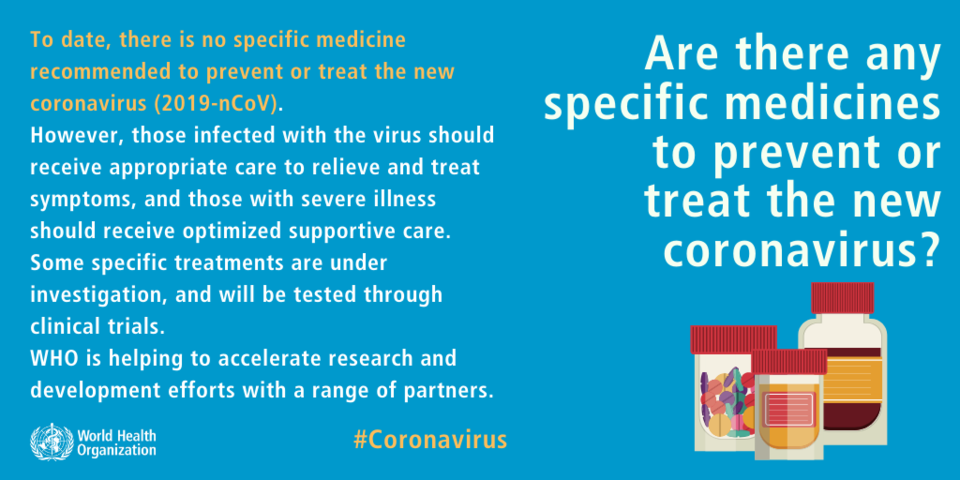A lot of information about the rising strain of coronavirus has swept across the world, and the World Health Organization wants to be sure that the public knows the facts about the virus.
Using what is currently known about COVID-19, WHO has put together 14 helpful graphics to debunk a number of popular myths to help the public understand how the virus spreads, which are all available on their website.
The most important thing to remember is that the best-proven way to protect against the COVID-19 virus is to regularly clean hands using soap and water, or with an alcohol-based hand rub, and to avoid touching the face with unclean hands.
Moose Jaw Today staff have summarized the myths address by WHO below:
Myth: Only really old or really young people can catch coronavirus.
People of all ages are susceptible to COVID-19, and older people or people with pre-existing medical conditions like asthma, heart conditions, or diabetes are more vulnerable to becoming severely ill.
Myth: COVID-19 can’t survive in certain climates.
The COVID-19 virus can be transmitted in both hot and humid climates as well as cold and snowy climates. There is no reason to believe that cold temperatures can kill the virus.
Myth: Coronavirus can be transmitted through mosquito bites.
There is no evidence that mosquito bites are transmitting the COVID-19 virus, as it is a respiratory virus that spreads through the drops created during sneezing, coughing, or in saliva.
Myth: Altering your body temperature with a hot bath can prevent catching coronavirus.
The human body sits at a regular 37 C, and taking a hot bath or shower will not alter the body’s internal temperature or prevent the body from contracting the COVID-19 virus.
Myth: Using a saline rinse in your nose can prevent infection of coronavirus.
There is no evidence that regular use of a saline rinse through sinuses can prevent catching COVID-19 or aid in the recovery of a respiratory illness like this virus.
Myth: Eating garlic will help fight the virus off.
The WHO has no evidence that eating garlic has helped protect people from the COVID-19 virus.
Myth: Spraying alcohol or chlorine on your body will kill the virus.
Applying alcohol or chlorine topically to the body will not kill viruses that have already entered the system, and can be dangerous to the eyes, mouth, and clothing.
Myth: Using UV lamps and hand dryers can kill the virus.
UV lamps are not effective for sterilization and can harm the skin, and hand dryers are not effective in killing the COVID-19 virus.
Myth: Thermal scanners can tell when you’re infected.
Thermal scanners are effective in detecting individuals that have developed a fever, but cannot tell if an individual is infected with the COVID-19 virus before they begin showing symptoms. It can take between 2 to 10 days before fever symptoms appear in an infected individual.
Myth: Vaccines for pneumonia also protect against coronavirus.
COVID-19 is so different from previous respiratory viruses that it requires it’s own vaccine, which researchers are working to develop. Vaccines against pneumonia and influenza type B will not protect against COVID-19 but can offer protection against respiratory illness to improve health.
Myth: Taking antibiotics can help prevent the virus.
Antibiotics are meant for bacteria, not viruses like COVID-19, and are not meant to be preventative measures. Some individuals in hospitals are receiving antibiotics due to the possibility of bacterial infections arising alongside coronavirus symptoms.
There are currently no specific medicines to treat COVID-19, but researchers are working on a solution.




